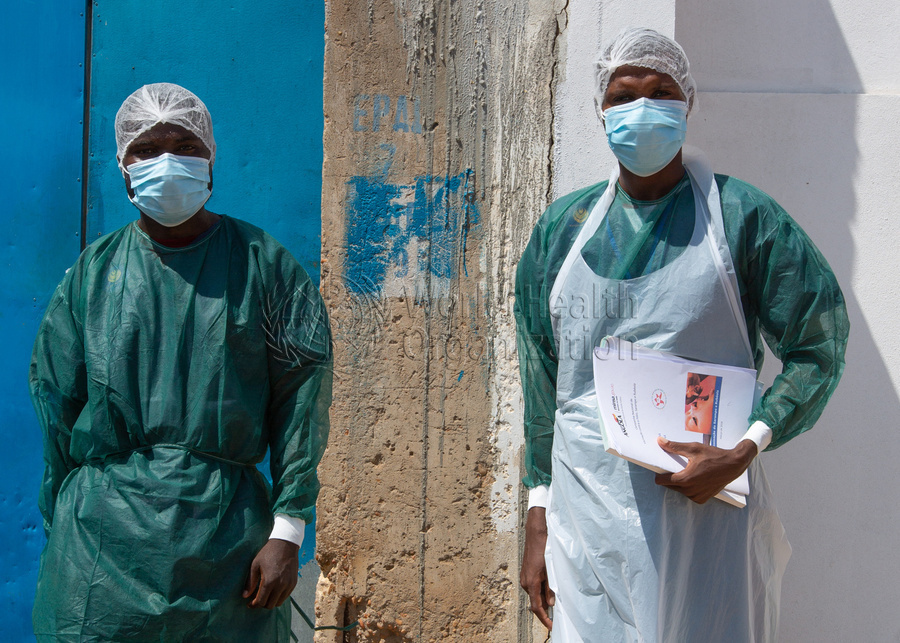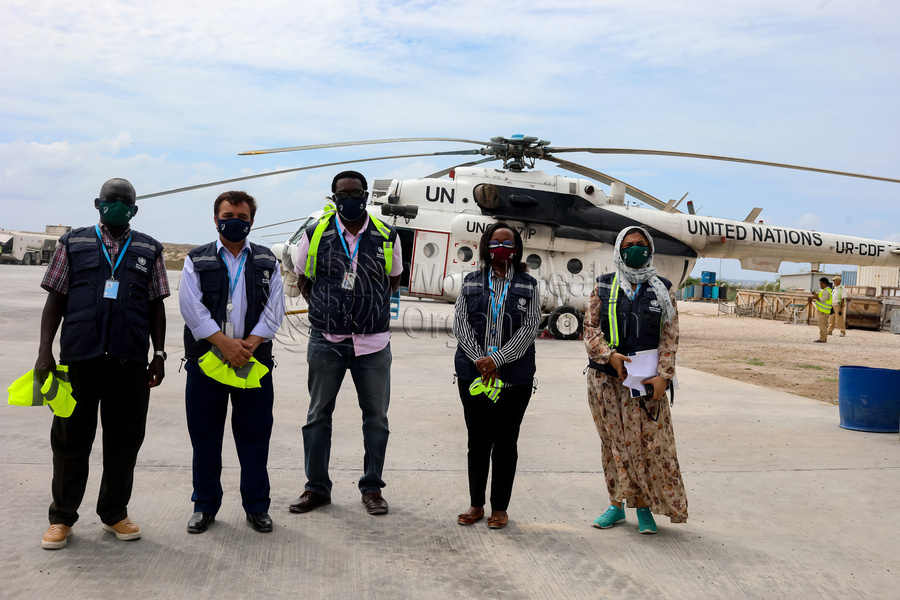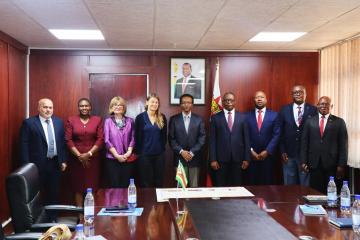COVID 19 Epidemiology/Surveillance
X
Title: Emergence of SARS-CoV-2 Delta Variant, Benin, May–July 2021Journal: Emerging Infectious Diseases
Publish date: Jan 2, 2021
URL: https://wwwnc.cdc.gov/eid/article/28/1/21-1909_article
Severe acute respiratory syndrome coronavirus 2 Delta variant epidemiology in Africa is unknown. We found Delta variant was introduced in Benin during April–May 2021 and became predominant within 2 months, after which a steep increase in reported coronavirus disease incidence occurred. Benin might require increased nonpharmaceutical interventions and vaccination coverage.
X
Title: Introduction of SARS-CoV-2 variant of concern 20h/501Y.V2 (B.1.351) from Malawi to ItalyJournal: Emerging Microbes & Infections
Publish date: Apr 9, 2021
URL: https://www.tandfonline.com/doi/epub/10.1080/22221751.2021.1906757?needAccess=true
We report here an imported case of SARS-CoV-2 variant of concern B.1.1.351 (also known as 20H/501Y.V2 or “South African variant” or VOC 202012/02) in a 66-years old symptomatic male who returned from Malawi to Italy.
X
Title: Unrecognized introduction of SARS-CoV-2 variants of concern to Central Africa: Import and local transmission of B.1.1.7 in Gabon in the very early stage of the variant spread to the African continentJournal: Journal of Medical Virology
Publish date: Jun 29, 2021
URL: https://www.ncbi.nlm.nih.gov/pmc/articles/PMC8426813/pdf/JMV-93-6054.pdf
The rapid spread of the severe acute respiratory syndrome coronavirus 2 (SARS-CoV-2) variant of concern with higher infectivity has already resulted in the enormous increase in infection cases worldwide. We report an unrecognized introduction of the variant B.1.1.7 in Gabon in December 2020, which was the initial phase of the variant introduction to Africa. The B.1.1.7 variant was also detected in a hospitalized patient in January 2021, indicating a rapid spread of the variant in Gabon since its first detection. Phylogenetic analysis revealed that the detected B.1.1.7 variants originated from the distinct regions, strongly suggesting that the B.1.1.7 variant had been repeatedly introduced to Gabon since December 2020. These results provide insights on the unrecognized risks of infections with variants of concern, and show the necessity to conduct continuous genomic monitoring for immediate alert and control of novel SARS-CoV-2 variant infections.
COVID 19 response activities
X
Title: Expanding the boundaries of vaccine discourse: impact of visual illustrations communication intervention on intention towards COVID-19 vaccination among victims of insecurity in NigeriaJournal: Human Vaccines & Immunotherapeutics
Publish date: Jun 15, 2021
URL: https://www.tandfonline.com/doi/full/10.1080/21645515.2021.1886558
Research on how to promote vaccination among victims of conflict is scarce. In this study, we conducted an experiment to determine how an artistic illustration communication intervention delivered alongside counseling will influence the behavior intention toward COVID-19 vaccination. The study involved 470 respondents (n = 235 control) and (n = 235 treatment). Variables from social cognitive theory and theory of planned behavior were used to develop the study hypotheses. The result of the study showed that victims of conflict who are exposed to visual messages on COVID-19 vaccination reported greater self-efficacy than those who are not. Also, victims of conflict who are exposed to visual messages on COVID-19 vaccination reported greater task efficacy than those who are not. Furthermore, victims of conflict who are exposed to visual arts on COVID-19 vaccination reported more positive outcome expectancy from the vaccine than those who are not. Finally, the result showed that victims of conflict who are exposed to visual messages on COVID-19 vaccination reported intention to make themselves available for vaccination than those who are not. We discussed these findings and highlighted the nexus between insecurity and health promotion.
X
Title: Efficacy of convalescent plasma for treatment of COVID-19 in UgandaJournal: BMJ Open Respiratory Research
Publish date: Jul 23, 2021
URL: https://www.ncbi.nlm.nih.gov/pmc/articles/PMC8354811/pdf/bmjresp-2021-001017.pdf
Rationale
Convalescent plasma (CCP) has been studied as a potential therapy for COVID-19, but data on its efficacy in Africa are limited.
Objective
In this trial we set out to determine the efficacy of CCP for treatment of COVID-19 in Uganda.
Measurements
Patients with a positive SARS-CoV-2 reverse transcriptase (RT)-PCR test irrespective of disease severity were hospitalised and randomised to receive either COVID-19 CCP plus standard of care (SOC) or SOC alone. The primary outcome was time to viral clearance, defined as having two consecutive RT-PCR-negative tests by day 28. Secondary outcomes included time to symptom resolution, clinical status on the modified WHO Ordinal Clinical Scale (≥1-point increase), progression to severe/critical condition (defined as oxygen saturation <93% or needing oxygen), mortality and safety.
Main results
A total of 136 patients were randomised, 69 to CCP+SOC and 67 to SOC only. The median age was 50 years (IQR: 38.5–62.0), 71.3% were male and the median duration of symptom was 7 days (IQR=4–8). Time to viral clearance was not different between the CCP+SOC and SOC arms (median of 6 days (IQR=4–11) vs 4 (IQR=4–6), p=0.196). There were no statistically significant differences in secondary outcomes in CCP+SOC versus SOC: time to symptom resolution (median=7 (IQR=5–7) vs 7 (IQR=5–10) days, p=0.450), disease progression (9 (22.0%) vs 7 (24.0%) patients, p=0.830) and mortality (10 (14.5%) vs 8 (11.9%) deaths, p=0.476).
Conclusion
In this African trial, CCP therapy did not result in beneficial virological or clinical improvements. Further trials are needed to determine subgroups of patients who may benefit from CCP in Africa.
X
Title: Moving during times of crisis: Migration, living arrangements and COVID-19 in South AfricaJournal: Scientific African
Publish date: Aug 4, 2021
We explore flexibility in living arrangements during times of crisis by investigating adult mobility at various stages of the COVID-19 related initial lockdown in South Africa. Living arrangements are not static, and they may change considerably in response to economic and health shocks. The South African context is particularly interesting to investigate because studies suggest that many households remain “stretched” between rural and urban nodes, and kin networks have been identified as an important source of support during times of hardship. We use descriptive methods to analyze mobility in anticipation of the “hard” (level 5) lockdown, when almost all economic and on-site teaching activity was suspended, and the subsequent easing to lockdown level 4. The data come from the largest South African non-medical rapid mobile survey conducted during COVID-19, which employed telephone interviews to survey a representative sample of 7074 adults drawn using a stratified sampling design. We find that during the first few months of the COVID-19 lockdown in 2020, approximately 16 percent of adults in South Africa had moved into a different household. Most adults (82%) only moved once; those who moved twice were the most likely to have employment to return to, suggesting that these movers include circular labour migrants. The study highlights the “double-rootedness” of adults, who remain attached to another “family” home, and it points to the importance of living arrangements as a livelihood strategy when employment is lost.
COVID 19 vaccination
X
Title: A qualitative study on experiences of HIV vaccine trial participants in a phase I/II double-blinded, randomized placebo-controlled clinical trial in Tanzania: Lessons for COVID-19 vaccine testingJournal: Journal of Public Health and Epidemiology
Publish date: Jul 27, 2021
URL: https://academicjournals.org/journal/JPHE/article-full-text-pdf/7BBD2CB67514
HIV remains a major public health problem in Sub-Saharan Africa. About 54.5% of all people living with HIV live in Eastern and Southern Africa. There is no HIV vaccine or cure available yet despite ongoing research to develop one and uptake of vaccines is critical in the global society. It is imperative to describe the perceptions and experiences of the vaccines trial participants, as they may give lessons for COVID-19 vaccine development. A phenomenological qualitative study was conducted to describe the experiences of volunteers who participated in a phase I/II HIV vaccine trial in Tanzania. A purposive sample of 20 of the 60 trial participants was interviewed. Interviews were subjected to thematic-content analysis. The study showed that trial participation was driven by positive expectations related to health and the realization of the need for an effective vaccine to combat HIV. However, fear and concerns about the safety of the trial vaccine were the frequently reported challenges to participation. The significant others and community play an important role in trial participation. The success of a trial depends on direct and indirect participation in trials. Future vaccine trials must promote positive expectations for trial participation and address fears and concerns related to vaccine safety.
X
Title: Considerations for Establishing Successful Coronavirus Disease Vaccination Programs in AfricaJournal: Emerging Infectious Diseases
Publish date: Aug 8, 2021
URL: https://wwwnc.cdc.gov/eid/article/27/8/pdfs/20-3870.pdf
The accelerated development of coronavirus disease (COVID-19) candidate vaccines is intended to achieve worldwide immunity. Ensuring COVID-19 vaccination is crucial to stemming the pandemic, reclaiming everyday life, and helping restore economies. However, challenges exist to deploying these vaccines, especially in resource-limited sub-Saharan Africa. In this article, we highlight lessons learned from previous efforts to scale up vaccine distribution and offer considerations for policymakers and key stakeholders to use for successful COVID-19 vaccination rollout in Africa. These considerations range from improving weak infrastructure for managing data and identifying adverse events after immunization to considering financing options for overcoming the logistical challenges of vaccination campaigns and generating demand for vaccine uptake. In addition, providing COVID-19 vaccination can be used to promote the adoption of universal healthcare, especially in sub-Saharan Africa countries.
X
Title: Safety and immunogenicity of the ChAdOx1 nCoV-19 (AZD1222) vaccine against SARS-CoV-2 in people living with and without HIV in South Africa: an interim analysis of a randomised, double-blind, placebo-controlled, phase 1B/2A trialJournal: Lancet HIV
Publish date: Aug 9, 2021
URL: https://www.ncbi.nlm.nih.gov/pmc/articles/PMC8372504/pdf/main.pdf
People living with HIV are at an increased risk of fatal outcome when admitted to hospital for severe COVID-19 compared with HIV-negative individuals. We aimed to assess safety and immunogenicity of the ChAdOx1 nCoV-19 (AZD1222) vaccine in people with HIV and HIV-negative individuals in South Africa. Methods In this ongoing, double-blind, placebo-controlled, phase 1B/2A trial (COV005), people with HIV and HIV-negative participants aged 18−65 years were enrolled at seven South African locations and were randomly allocated (1:1) with full allocation concealment to receive a prime-boost regimen of ChAdOx1 nCoV-19, with two doses given 28 days apart. Eligibility criteria for people with HIV included being on antiretroviral therapy for at least 3 months, with a plasma HIV viral load of less than 1000 copies per mL. In this interim analysis, safety and reactogenicity was assessed in all individuals who received at least one dose of ChAdOx1 nCov 19 between enrolment and Jan 15, 2021. Primary immunogenicity analyses included participants who received two doses of trial intervention and were SARS-CoV-2 seronegative at baseline. This trial is registered with ClinicalTrials.gov, NCT04444674, and the Pan African Clinicals Trials Registry, PACTR202006922165132. Findings Between June 24 and Nov 12, 2020, 104 people with HIV and 70 HIV-negative individuals were enrolled. 102 people with HIV (52 vaccine; 50 placebo) and 56 HIV-negative participants (28 vaccine; 28 placebo) received the priming dose, 100 people with HIV (51 vaccine; 49 placebo) and 46 HIV-negative participants (24 vaccine; 22 placebo) received two doses (priming and booster). In participants seronegative for SARS-CoV-2 at baseline, there were 164 adverse events in those with HIV (86 vaccine; 78 placebo) and 237 in HIV-negative participants (95 vaccine; 142 placebo). Of seven serious adverse events, one severe fever in a HIV-negative participant was definitely related to trial intervention and one severely elevated alanine aminotranferase in a participant with HIV was unlikely related; five others were deemed unrelated. One person with HIV died (unlikely related). People with HIV and HIV-negative participants showed vaccine-induced serum IgG responses against wild-type Wuhan-1 Asp614Gly (also known as D614G). For participants seronegative for SARS-CoV-2 antigens at baseline, full-length spike geometric mean concentration (GMC) at day 28 was 163·7 binding antibody units (BAU)/mL (95% CI 89·9–298·1) for people with HIV (n=36) and 112·3 BAU/mL (61·7–204·4) for HIV-negative participants (n=23), with a rising day 42 GMC booster response in both groups. Baseline SARS-CoV-2 seropositive people with HIV demonstrated higher antibody responses after each vaccine dose than did people with HIV who were seronegative at baseline. High-level binding antibody cross-reactivity for the full-length spike and receptor-binding domain of the beta variant (B.1.351) was seen regardless of HIV status. In people with HIV who developed high titre responses, predominantly those who were receptor-binding domain seropositive at enrolment, neutralising activity against beta was retained Interpretation ChAdOx1 nCoV-19 was well tolerated, showing favourable safety and immunogenicity in people with HIV, including heightened immunogenicity in SARS-CoV-2 baseline-seropositive participants. People with HIV showed cross-reactive binding antibodies to the beta variant and Asp614Gly wild-type, and high responders retained neutralisation against beta. Funding The Bill & Melinda Gates Foundation, South African Medical Research Council, UK Research and Innovation, UK National Institute for Health Research, and the South African Medical Research Council
COVID 19 public perceptions and effects
X
Title: COVID-19 and its impacts: The situation in Niger republicJournal: Clinical Epidemiology and Global Health
Publish date: Jul 1, 2021
URL: https://doi.org/10.1016/j.cegh.2021.100797
COVID-19 being a public health emergency of international concern has emerged in most African countries including Niger. Niger, a landlocked country, is tasked with controlling the pandemic. However, of the big challenges the country faced is the fragility of healthcare system which posed limitations to the fight against the virus. The virus overwhelmed the fragile healthcare system which led to inaccessibility of quality healthcare to the citizens coupled with issues of flooding and economic recession that happened during the pandemic. The healthcare sectored has further been crippled by exposure and infection of the already insufficient healthcare workers. In addition to this, there was the burden of NTDs and other communicable and non-communicable diseases that subverted the country in the depths of difficulties. As per the predictions of World Bank, the poverty curve is likely to escalate due to the outrageous impacts of COVID-19. Adding on to this, the occurrence of natural disasters such as flooding has further stretched the country. It's no coincidence that the country would confront plethora of challenges amidst the second wave. Therefore, timely decision and necessary interventions are needed to strengthen the country's fight against the pandemic. However, this is only feasible when Nigerien government, international allies and other wealthy nations work closely to ensure that the challenges faced by the healthcare system are tackled.
X
Title: Coronavirus disease 2019 vaccine acceptance and perceived barriers among university students in northeast Ethiopia: A cross-sectional studyJournal: Clinical Epidemiology and Global Health
Publish date: Aug 9, 2021
URL: https://doi.org/10.1016/j.cegh.2021.100848
Introduction
Universities are places where students live and study in close contact to each other. Nowadays, the foundations of this particular group have been affected significantly by the rapid spread of the coronavirus disease 2019. The severity of the COVID-19 pandemic has demanded the emergency use of COVID-19 vaccines. However, there is still limited evidence in COVID-19 vaccine acceptability and perceived barriers among some subgroups, including university students. This study aimed to assess vaccine acceptance, associated factors, and perceived barriers among university students, Ethiopia.
Methods
A cross-sectional study was conducted in January 2021 at Debre Berhan University among 423 students. The participants were selected using simple random sampling technique. A semi-structured, pretested, and self-administered questionnaire was used to collect the data. Multivariable logistic-regression model was fitted to identify factors associated with vaccine acceptance. An adjusted odds ratio with 95% confidence interval and its p-value of ≤0.05 was used to declare significant association.
Results
The proportion of the COVID-19 vaccine acceptance was 69.3% (95% CI: 65, 74). Being knowledgeable (AOR: 2.43, CI: 1.57, 3.77), being a health science student (AOR: 2.25, CI: 1.43, 3.54), and being in a family practicing COVID-19 prevention (AOR: 1.73, CI: 1.06, 2.81) were found to be factors associated with COVID-19 vaccine acceptance.
Conclusion
Though, this study found a 69.3% acceptance of COVID-19 vaccine, there were noticeable perceived barriers and related factors in vaccine acceptance hesitancy. Thus, health education and communication regarding the vaccine are very crucial to alleviate the identified barriers
X
Title: Social Distancing During the Sars-Cov2 (COVID-19) Pandemic: Interpretations and Implication in the African ContextJournal: Perspectives on Global Development and Technology
Publish date: Aug 12, 2021
URL: https://brill.com/downloadpdf/journals/pgdt/20/3/article-p289_6.xml
In absence of vaccine or a well-known treatment at onset of coronavirus disease (COVID-19), public health measures such as social distancing, washing hands, and wearing face masks were implemented as the most effective strategies to combat the spread of the virus. This article explores the perceptions and interpretations of COVID-19-related regulations and implications of the disease to human life in different contexts. The article adopted a qualitative research methodology, where twenty participants were selected purposively and interviewed, then data analyzed inductively. The analysis of interviews revealed varied conceptualizations and interpretations about the disease and social distancing. Notably, COVID-19 regulations such social distancing and face masking were perceived as imported policy, a misconception that would be attributed to non-adherence to COVID-19 protocols. Further, the study underscore that the disease and policies related to it disrupted ways of social life; infringed on people’s social-cultural rights; and had adverse health consequences. The study recommends a strategic and deliberate reconstruction of the society to restore its sociological functions post COVID-19 pandemic.
COVID 19 effects on other diseases and sectors
X
Title: Measles crisis in Africa amidst the COVID-19 pandemic: Delayed measles vaccine administration may cause a measles outbreak in AfricaJournal: Journal of Medical Virology
Publish date: Jun 28, 2021
URL: https://doi.org/10.1002/jmv.27150
Even though a vaccine is available, measles still poses a risk in many parts of the world including Africa. The disease is caused by a highly contagious virus that spreads from person to person via airborne transmission including breathing, coughing, and sneezing. Among other symptoms, infected individuals often experience rash, high fever, cough, runny rose, and irritated red, watery eyes. Contagious people can spread the disease up to 4 days before and 4 days after the presence of a rash, with the highest infectivity during symptomatic stages involving fever, cough, and runny nose.
X
Title: Access to healthcare for people with disabilities in South Africa: Bad at any time, worse during COVID-19?Journal: South African Family Practice
Publish date: Jul 19, 2021
URL: https://doi.org/10.4102/safp.v63i1.5226
People with disabilities, especially those living in low- and middle-income countries, experience significant challenges in accessing healthcare services and support. At times of disasters and emergencies, people with disabilities are further marginalised and excluded. During the coronavirus disease 2019 (COVID-19) pandemic, many people with disabilities are unable to access healthcare facilities, receive therapeutic interventions or rehabilitation, or gain access to medication. Of those who are able to access facilities, many experience challenges, and at times direct discrimination, accessing life-saving treatment such as intensive care unit admission and ventilator support. In addition, research has shown that people with disabilities are at higher risk of contracting the virus because of factors that include the need for interpersonal caregivers and living in residential facilities. We explore some of the challenges that people with disabilities residing in South Africa currently experience in relation to accessing healthcare facilities.
X
Title: Impact of the COVID-19 pandemic and response on the utilisation of health services in public facilities during the first wave in Kinshasa, the Democratic Republic of the CongoJournal: BMJ Global Health
Publish date: Jul 27, 2021
URL: https://gh.bmj.com/content/bmjgh/6/7/e005955.full.pdf
Introduction
Health service use among the public can decline during outbreaks and had been predicted among low and middle-income countries during the COVID-19 pandemic. In March 2020, the government of the Democratic Republic of the Congo (DRC) started implementing public health measures across Kinshasa, including strict lockdown measures in the Gombe health zone. Methods Using monthly time series data from the DRC Health Management Information System (January 2018 to December 2020) and interrupted time series with mixed effects segmented Poisson regression models, we evaluated the impact of the pandemic on the use of essential health services (outpatient visits, maternal health, vaccinations, visits for common infectious diseases and non-communicable diseases) during the first wave of the pandemic in Kinshasa. Analyses were stratified by age, sex, health facility and lockdown policy (ie, Gombe vs other health zones).
Results
Health service use dropped rapidly following the start of the pandemic and ranged from 16% for visits for hypertension to 39% for visits for diabetes. However, reductions were highly concentrated in Gombe (81% decline in outpatient visits) relative to other health zones. When the lockdown was lifted, total visits and visits for infectious diseases and noncommunicable diseases increased approximately twofold. Hospitals were more affected than health centres. Overall, the use of maternal health services and vaccinations was not significantly affected.
Conclusion
The COVID-19 pandemic resulted in important reductions in health service utilisation in Kinshasa, particularly Gombe. Lifting of lockdown led to a rebound in the level of health service use but it remained lower than prepandemic levels.
Best Practices
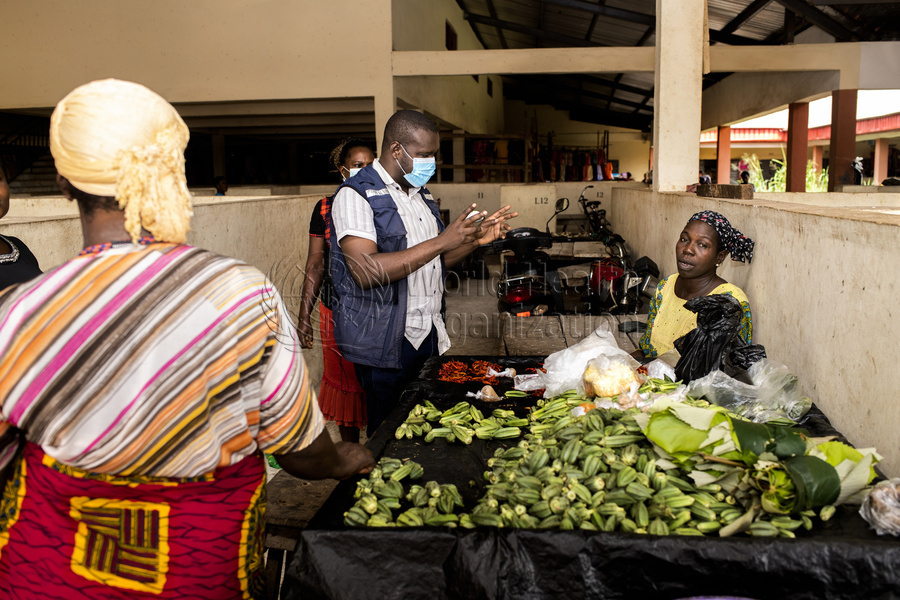
Stratégies d’endiguement: enseignements tirés de la première riposte à la COVID-19 dans cinq pays africains
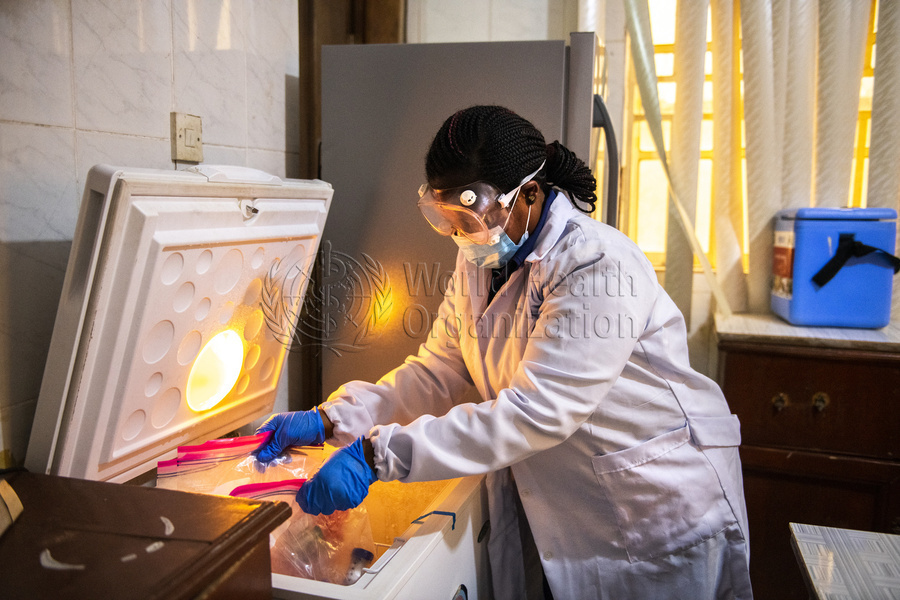
Coordonner l’action : enseignements tirés de la première riposte à la COVID-19 dans cinq pays africains
Policy Briefs
Guiding Tools
COVID-19 Technical Guidance
Infection Prevention and Control
IPC during Healthcare Home Care Transmission of COVID-19 Use of Masks VentilationClinical Management
Global Clinical Platform Living Guidance Oxygen Post COVID WHO Clinical Management PageLaboratories
Assessment tool for Labs Biosafety Genomic Sequencing Natural Immunity Reference Labs Shipping Testing Strategies (Recommendation) Using Immunodiagnostic TestsSurveillance
Adjusting Public Health Measures + Annexes Contact Tracing Digital Technologies for Contact Tracing Investigation Considerations Investigation Protcols Mortality Surveillance Guidance WHO COVID-19 DashboardEssential Health Services
Community HC and Outreach Services Global Supply Chain Catalogue Health Services Capacity Assessment Health Workforce Long Term Care Facilities Maintaining Blood Supply Maintaining Essential Health Services Mass Vaccination Campaigns Medical Equipment Modeling WHO COVID-19 Health Services Learning HubPreparedness, Readiness and Response
Adjusting PH Measures Capacity Review Tool and Intra-Action Reviews Critical Actions Investing in Preparedness Preparedness for Natural Disasters Preparedness in Cities SPRPIHR, POEs and Mass Gatherings
Aviation Sector Controlling Spread at Ground Crossings International Travel and Travel Advice Management at POEs Maritine Sector Mass Gatherings Religious Gatherings Sports EventsCOVID-19 Vaccines
National Deployment and Vaccination Plans
There are no links for National Deployment and Vaccination Plans
Regulatory Preparedness
There are no links for Regulatory Preparedness
Costing and Funding
There are no links for Costing and Funding
Human Resources and Training
There are no links for Human Resources and Training
Vaccine Specific Resources
There are no links for Vaccine Specific Resources
Vaccine Acceptance and Demand
There are no links for Vaccine Acceptance and Demand
Vaccine Safety
There are no links for Vaccine Safety
Monitoring and Evaluation
There are no links for Monitoring and Evaluation
| Title | Journal | Date Published | Category | Country |
|---|---|---|---|---|
| Epilepsy care delivery during COVID-19 in resource-limited countries: A survey in collaboration with International Epilepsy Equity Group | Epilepsy & Behavior | Nov 2, 2023 | Knowledge Products > Published Literature > COVID 19 effects on other diseases and sectors | |
| Handwashing adherence during the COVID-19 pandemic: A longitudinal study based on protection motivation theory | Social Science & Medicine | Nov 1, 2023 | Knowledge Products > Published Literature > COVID 19 response activities | |
| The lived experiences of emergency care personnel in the Western Cape, South Africa during the COVID-19 pandemic: A longitudinal hermeneutic phenomenological study | African Journal of Emergency Medicine | Dec 15, 2022 | Knowledge Products > Published Literature > COVID 19 effects on other diseases and sectors | |
| Trend of expansion of SARS-CoV-2 infection and COVID-19 burden in Gabon (Central Africa) in mid-2021, based on a serological survey | International Society for Infectious Diseases Region (IJID Regions) | Dec 14, 2022 | Knowledge Products > Published Literature > COVID 19 Epidemiology/Surveillance | |
| Pre- and intra -COVID-19 trends of contraceptive use among women who had termination of pregnancy at Charlotte Maxeke Johannesburg Academic Hospital, Johannesburg South Africa (2010–2020) | PlosOne | Dec 14, 2022 | Knowledge Products > Published Literature > COVID 19 effects on other diseases and sectors | |
| Students' acceptance of WhatsApp as teaching and learning tool in distance higher education in sub-Saharan Africa | Cogent Education | Dec 14, 2022 | Knowledge Products > Published Literature > COVID 19 effects on other diseases and sectors | |
| COVID-19 and the informal economy in a small-town in South Africa: governance implications in the post-COVID era | Cogent Social Sciences | Dec 14, 2022 | Knowledge Products > Published Literature > COVID 19 effects on other diseases and sectors | |
| Modern slavery and labor exploitation during the COVID-19 pandemic: a conceptual model | Global Health Action | Dec 14, 2022 | Knowledge Products > Published Literature > COVID 19 effects on other diseases and sectors | |
| COVID-19 vaccine hesitancy in Zambia: a glimpse at the possible challenges ahead for COVID-19 vaccination rollout in sub-Saharan Africa | Human Vaccines & Immunotherapeutics | Dec 14, 2022 | Knowledge Products > Published Literature > COVID 19 vaccination | |
| COVID-19 and price stability in Eastern Africa: How effective were the governments’ policy response measures? | Cogent Economics & Finance | Dec 14, 2022 | Knowledge Products > Published Literature > COVID 19 effects on other diseases and sectors |
News from WHO Afro
-
Ethiopia Launched National Strategy to Combat Substandard and Falsified Medical Products (2026–2030)
By gebremichaela@who.int
2 weeks ago
